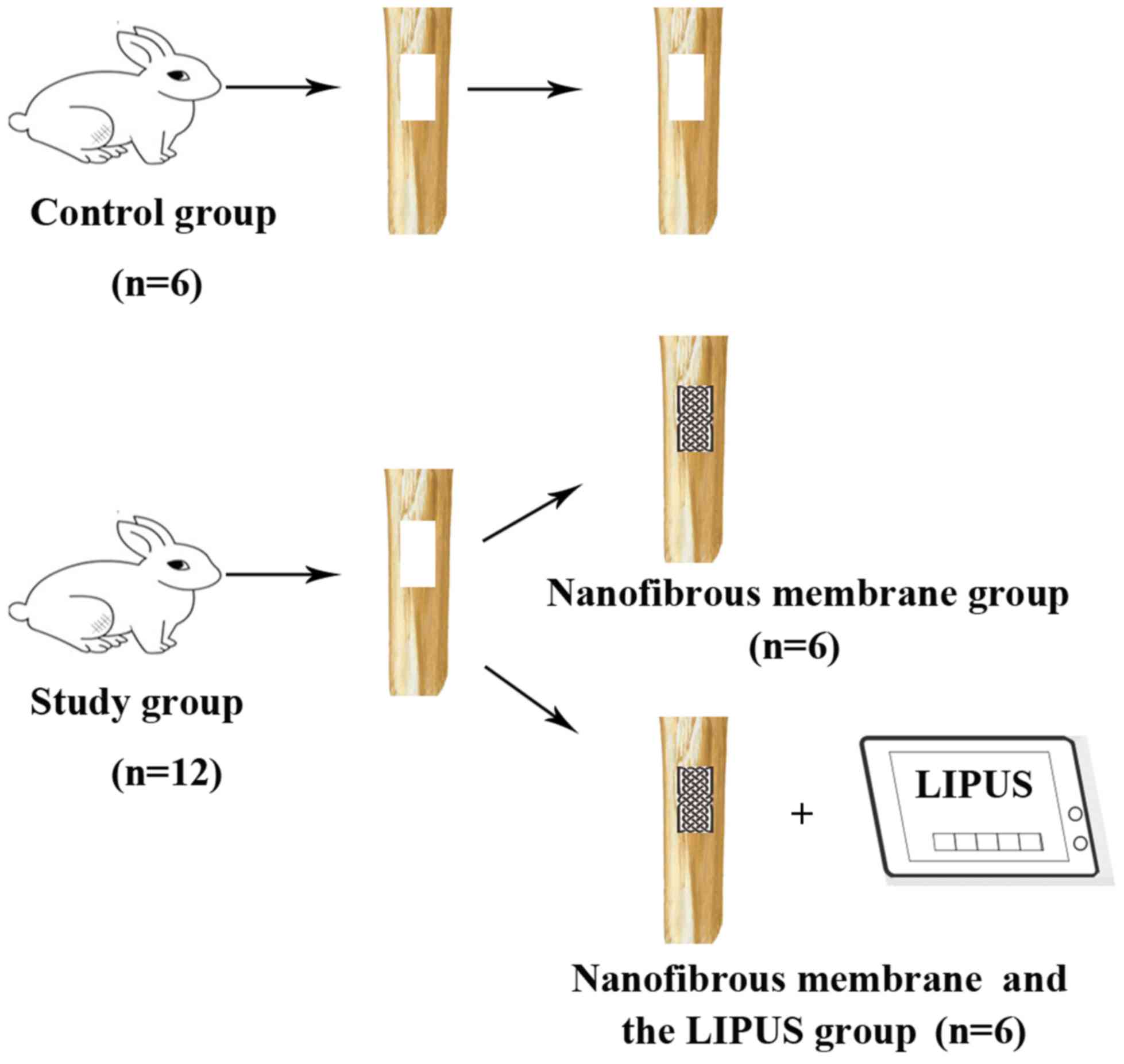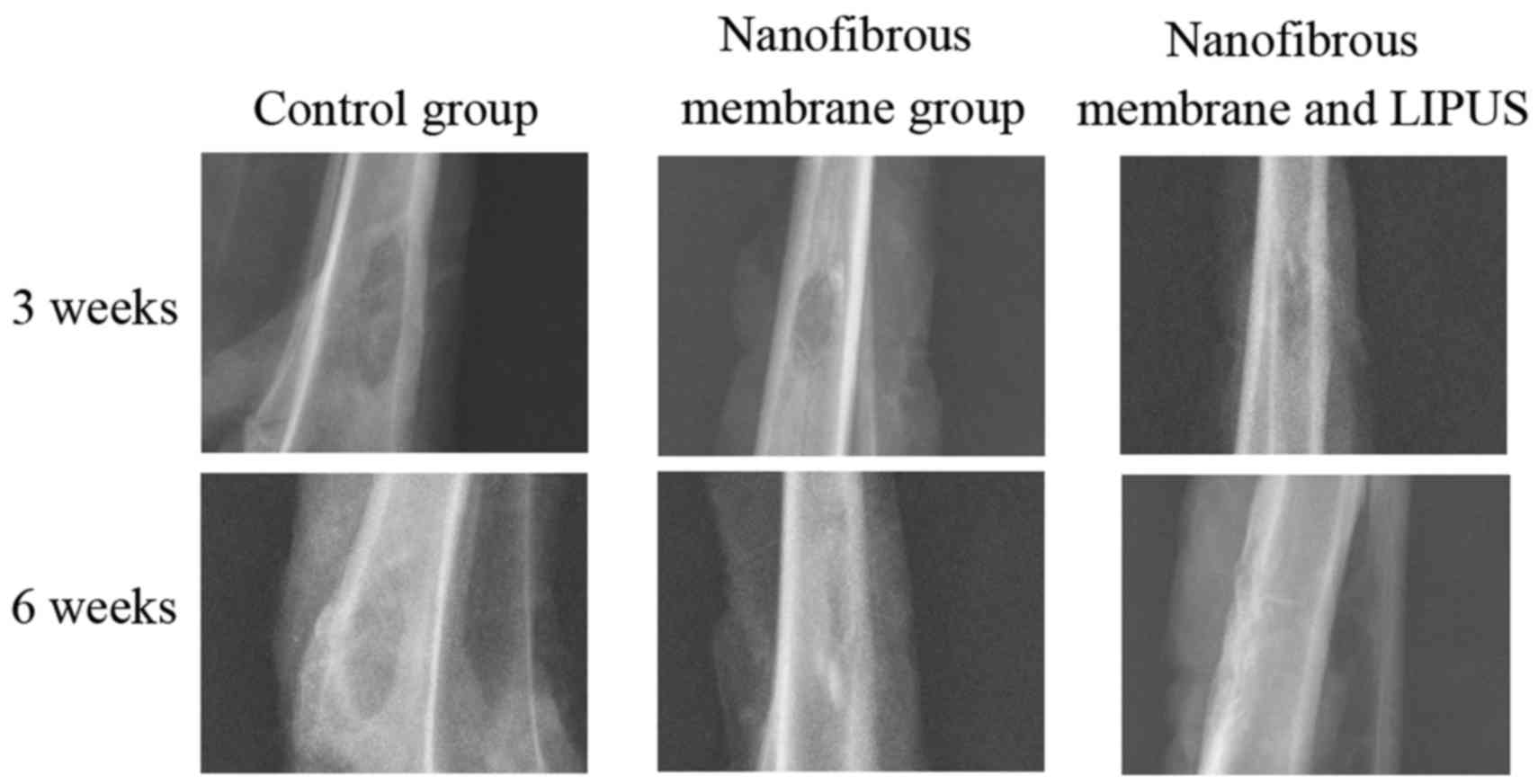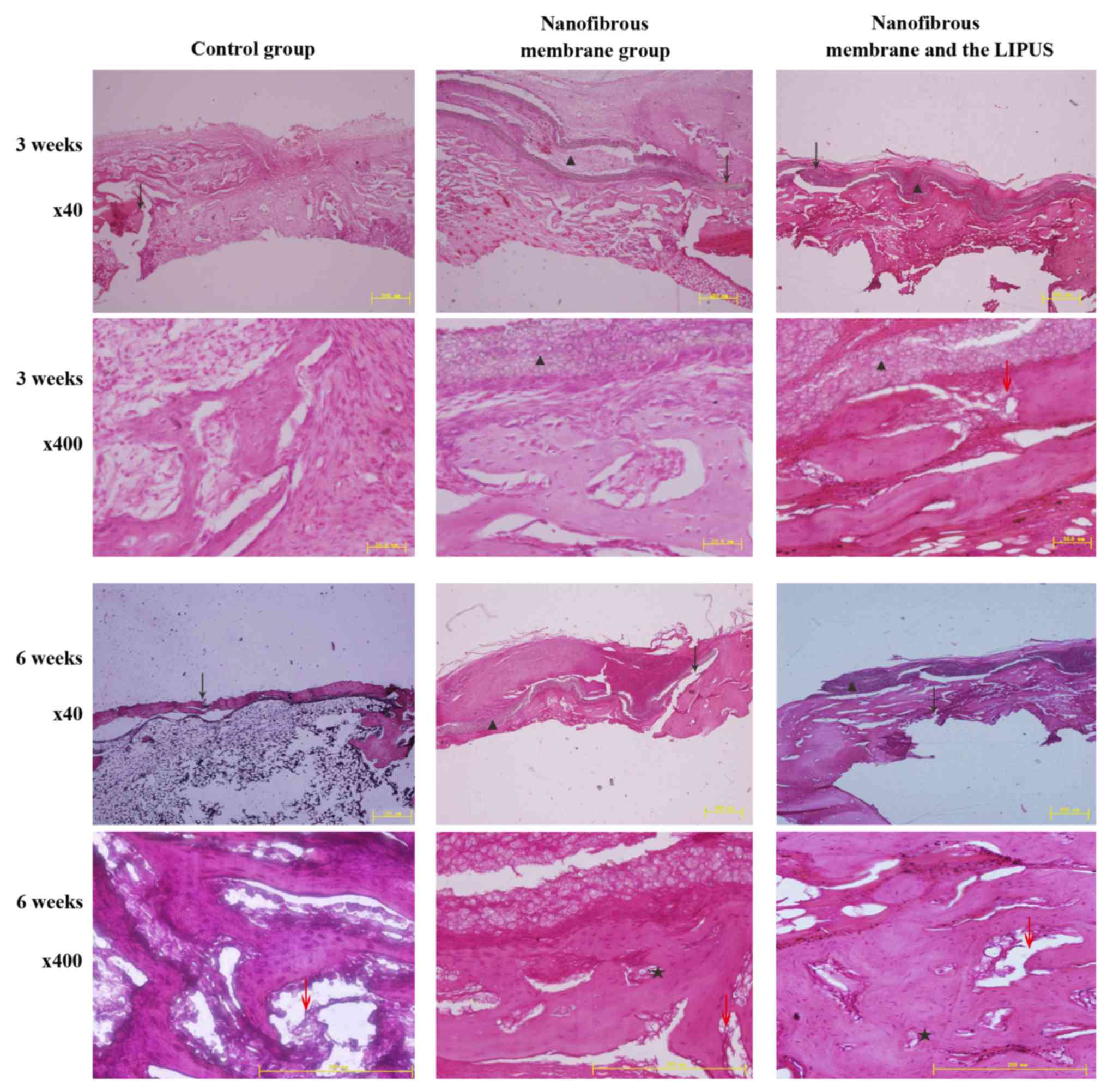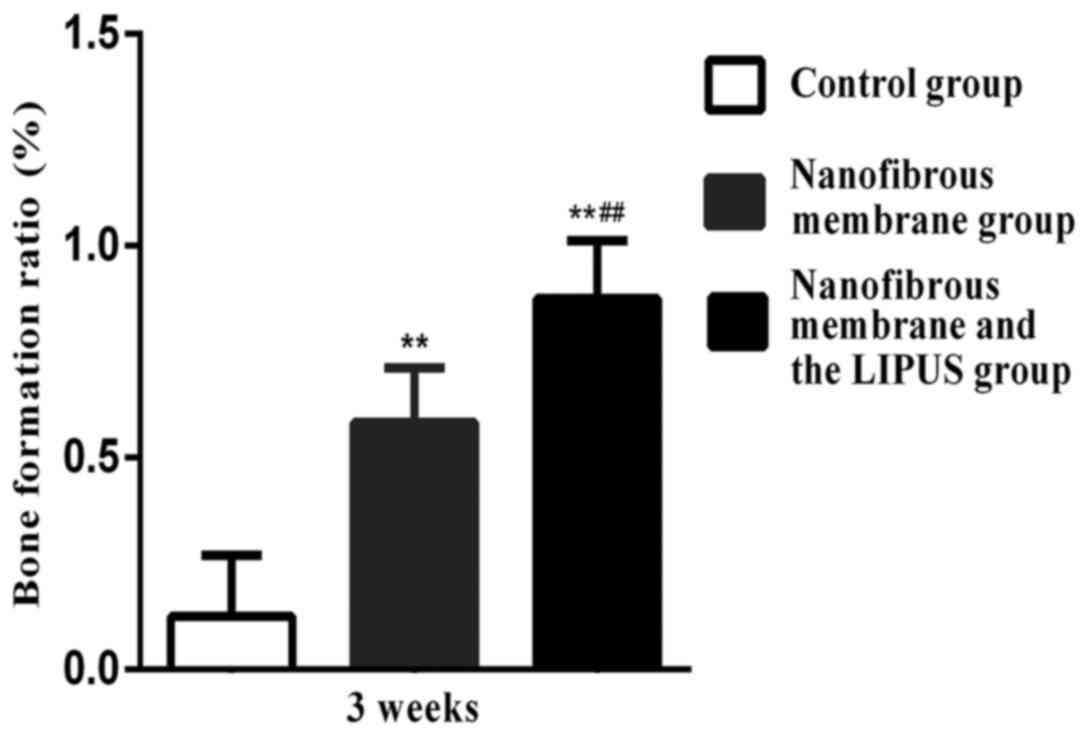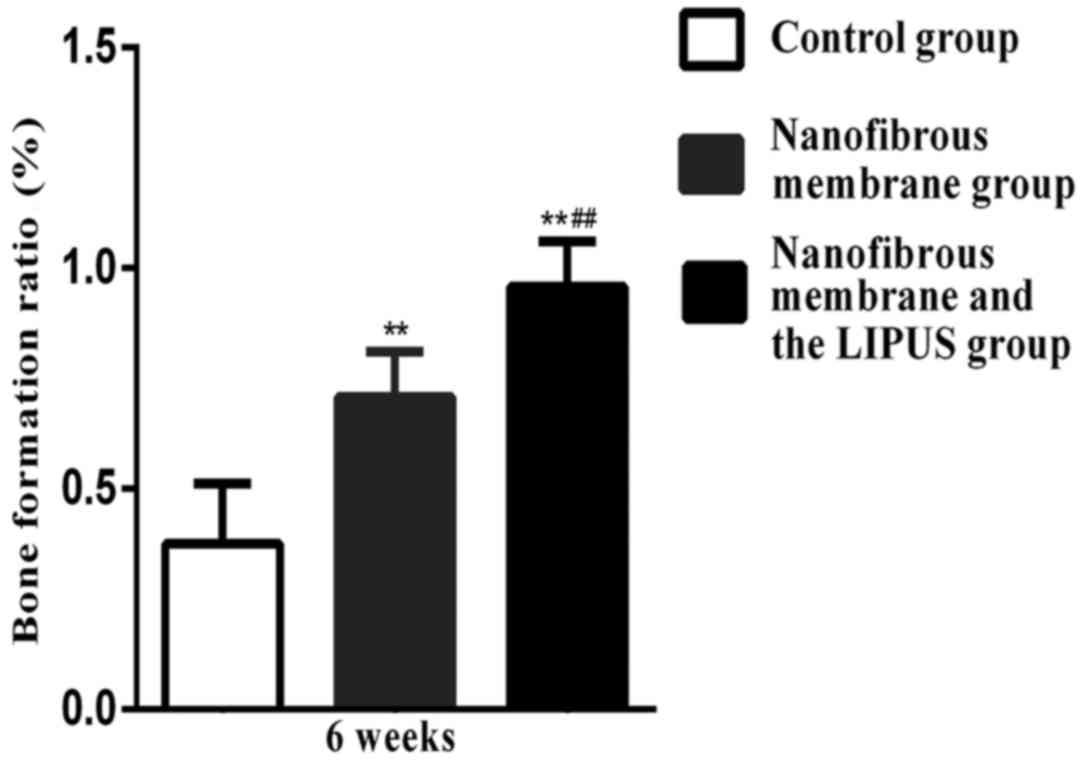|
1
|
Bhatt RA and Rozental TD: Bone graft
substitutes. Hand Clin. 28:457–468. 2012. View Article : Google Scholar : PubMed/NCBI
|
|
2
|
Kurien T, Pearson RG and Scammell BE: Bone
graft substitutes currently available in orthopaedic practice: The
evidence for their use. Bone Joint J. 95-B:583–597. 2013.
View Article : Google Scholar : PubMed/NCBI
|
|
3
|
Wang G, Yang H, Li M, Lu S, Chen X and Cai
X: The use of silk fibroin/hydroxyapatite composite co-cultured
with rabbit bone-marrow stromal cells in the healing of a segmental
bone defect. J Bone Joint Surg Br. 92:320–325. 2010. View Article : Google Scholar : PubMed/NCBI
|
|
4
|
Bucholz RW: Nonallograft osteoconductive
bone graft substitutes. Clin Orthop Relat Res. 44–52. 2002.
View Article : Google Scholar : PubMed/NCBI
|
|
5
|
Van der Stok J, van Lieshout EM,
El-Massoudi Y, Van Kralingen GH and Patka P: Bone substitutes in
the Netherlands- a systematic literature review. Acta Biomater.
7:739–750. 2011. View Article : Google Scholar : PubMed/NCBI
|
|
6
|
Kinaci A, Neuhaus V and Ring DC: Trends in
bone graft use in the United States. Orthopedics. 37:e783–e788.
2014. View Article : Google Scholar : PubMed/NCBI
|
|
7
|
Woo KM, Jun JH, Chen VJ, Seo J, Baek JH,
Ryoo HM, Kim GS, Somerman MJ and Ma PX: Nano-fibrous scaffolding
promotes osteoblast differentiation and biomineralization.
Biomaterials. 28:335–343. 2007. View Article : Google Scholar : PubMed/NCBI
|
|
8
|
Xin X, Hussain M and Mao JJ: Continuing
differentiation of human mesenchymal stem cells and induced
chondrogenic and osteogenic lineages in electrospun PLGA nanofiber
scaffold. Biomaterials. 28:316–325. 2007. View Article : Google Scholar : PubMed/NCBI
|
|
9
|
Dong S, Sun J, Li Y, Li J, Cui W and Li B:
Electrospun nanofibrous scaffolds of poly (L-lactic acid)-dicalcium
silicate composite via ultrasonic-aging technique for bone
regeneration. Mater Sci Eng C Mater Biol Appl. 35:426–433. 2014.
View Article : Google Scholar : PubMed/NCBI
|
|
10
|
Stevens MM and George JH: Exploring and
engineering the cell surface interface. Science. 310:1135–1138.
2005. View Article : Google Scholar : PubMed/NCBI
|
|
11
|
Jang JH, Castano O and Kim HW: Electrospun
materials as potential platforms for bone tissue engineering. Adv
Drug Deliv Rev. 61:1065–1083. 2009. View Article : Google Scholar : PubMed/NCBI
|
|
12
|
Schofer MD, Boudriot U, Bockelmann S, Walz
A, Wendorff JH, Greiner A, Paletta JR and Fuchs-Winkelmann S:
Effect of direct RGD incorporation in PLLA nanofibers on growth and
osteogenic differentiation of human mesenchymal stem cells. J Mater
Sci Mater Med. 20:1535–1540. 2009. View Article : Google Scholar : PubMed/NCBI
|
|
13
|
Liu W, Zhan J, Su Y, Wu T, Wu C,
Ramakrishna S, Mo X, Al-Deyab SS and El-Newehy M: Effects of plasma
treatment to nanofibers on initial cell adhesion and cell
morphology. Colloids Surf B Biointerfaces. 113:101–106. 2014.
View Article : Google Scholar : PubMed/NCBI
|
|
14
|
Mehta S, Long K, DeKoven M, Smith E and
Steen RG: Low-intensity pulsed ultrasound (LIPUS) can decrease the
economic burden of fracture non-union. J Med Econ. 18:542–549.
2015. View Article : Google Scholar : PubMed/NCBI
|
|
15
|
Guo G, Lu L, Ji H, Ma Y, Dong R, Tu J, Guo
X, Qiu Y, Wu J and Zhang D: Low intensity pulse ultrasound
stimulate chondrocytes growth in a 3-D alginate scaffold through
improved porosity and permeability. Ultrasonics. 58:43–52. 2015.
View Article : Google Scholar : PubMed/NCBI
|
|
16
|
Guo G, Ma Q, Zhao B and Zhang D:
Ultrasound-assisted permeability improvement and acoustic
characterization for solid-state fabricated PLA foams. Ultrason
Sonochem. 20:137–143. 2013. View Article : Google Scholar : PubMed/NCBI
|
|
17
|
Sato M, Nagata K, Kuroda S, Horiuchi S,
Nakamura T, Karima M, Inubushi T and Tanaka E: Low-intensity pulsed
ultrasound activates integrin-mediated mechanotransduction pathway
in synovial cells. Ann Biomed Eng. 42:2156–2163. 2014. View Article : Google Scholar : PubMed/NCBI
|
|
18
|
Hynes RO: Integrins: Bidirectional,
allosteric signaling machines. Cell. 110:673–687. 2002. View Article : Google Scholar : PubMed/NCBI
|
|
19
|
Kadler KE, Hill A and Canty-Laird EG:
Collagen fibrillogenesis: Fibronectin, integrins, and minor
collagens as organizers and nucleators. Curr Opin Cell Biol.
20:495–501. 2008. View Article : Google Scholar : PubMed/NCBI
|
|
20
|
Zhang Y, Ouyang H, Lim CT, Ramakrishna S
and Huang ZM: Electrospinning of gelatin fibers and gelatin/PCL
composite fibrous scaffolds. J Biomed Mater Res B Appl Biomater.
72:156–165. 2005. View Article : Google Scholar : PubMed/NCBI
|
|
21
|
Cai YZ, Wang LL, Cai HX, Qi YY, Zou XH and
Ouyang HW: Electrospun nanofibrous matrix improves the regeneration
of dense cortical bone. J Biomed Mater Res A. 95:49–57. 2010.
View Article : Google Scholar : PubMed/NCBI
|
|
22
|
Sarkar MR, Augat P, Shefelbine SJ,
Schorlemmer S, Huber-Lang M, Claes L, Kinzl L and Ignatius A: Bone
formation in a long bone defect model using a platelet-rich
plasma-loaded collagen scaffold. Biomaterials. 27:1817–1823. 2006.
View Article : Google Scholar : PubMed/NCBI
|
|
23
|
Zhang YZ, Ouyang H, Lim CT, Ramakrishna S
and Huang ZM: Electrospinning of gelatin fibers and gelatin/PCL
composite fibrous scaffolds. J Biomed Mater Res B Appl Biomater.
72:156–165. 2005. View Article : Google Scholar : PubMed/NCBI
|
|
24
|
Bhattarai SR, Bhattarai N, Yi HK, Hwang
PH, Cha DI and Kim HY: Novel biodegradable electrospun membrane:
Scaffold for tissue engineering. Biomaterials. 25:2595–2602. 2004.
View Article : Google Scholar : PubMed/NCBI
|
|
25
|
Zhu XD, Fan HS, Xiao YM, Li DX, Zhang HJ,
Luxbacher T and Zhang XD: Effect of surface structure on protein
adsorption to biphasic calcium-phosphate ceramics in vitro and in
vivo. Acta Biomater. 5:1311–1318. 2009. View Article : Google Scholar : PubMed/NCBI
|
|
26
|
Kolambkar YM, Bajin M, Wojtowicz A,
Hutmacher DW, García AJ and Guldberg RE: Nanofiber orientation and
surface functionalization modulate human mesenchymal stem cell
behavior in vitro. Tissue Eng Part A. 20:398–409. 2014. View Article : Google Scholar : PubMed/NCBI
|
|
27
|
Hui CF, Chan CW, Yeung HY, Lee KM, Qin L,
Li G, Leung KS, Hu YY and Cheng JC: Low-intensity pulsed ultrasound
enhances posterior spinal fusion implanted with mesenchymal stem
cells-calcium phosphate composite without bone grafting. Spine
(Phila Pa 1976). 36:1010–1016. 2011. View Article : Google Scholar : PubMed/NCBI
|
|
28
|
Wu L, Lin LJ and Qin YX: Enhancement of
cell ingrowth, proliferation, and early differentiation in a
three-dimensional silicon carbide scaffold using low-intensity
pulsed ultrasound. Tissue Eng Part A. 21:53–61. 2015. View Article : Google Scholar : PubMed/NCBI
|
|
29
|
Schiller HB and Fässler R:
Mechanosensitivity and compositional dynamics of cell-matrix
adhesions. EMBO Rep. 14:509–519. 2013. View Article : Google Scholar : PubMed/NCBI
|
|
30
|
Lv H, Li L, Sun M, Zhang Y, Chen L, Rong Y
and Li Y: Mechanism of regulation of stem cell differentiation by
matrix stiffness. Stem Cell Res Ther. 6:1032015. View Article : Google Scholar : PubMed/NCBI
|
|
31
|
Friedland JC, Lee MH and Boettiger D:
Mechanically activated integrin switch controls alpha5beta1
function. Science. 323:642–644. 2009. View Article : Google Scholar : PubMed/NCBI
|
|
32
|
Watabe H, Furuhama T, Tani-Ishii N and
Mikuni-Takagaki Y: Mechanotransduction activates α5β1 integrin and
PI3K/Akt signaling pathways in mandibular osteoblasts. Exp Cell
Res. 317:2642–2649. 2011. View Article : Google Scholar : PubMed/NCBI
|
|
33
|
Vaughan TJ, Mullen CA, Verbruggen SW and
McNamara LM: Bone cell mechanosensation of fluid flow stimulation:
A fluid-structure interaction model characterising the role
integrin attachments and primary cilia. Biomech Model Mechanobiol.
14:703–718. 2015. View Article : Google Scholar : PubMed/NCBI
|
|
34
|
Bernal A, Pérez LM, De Lucas B, Martín NS,
Kadow-Romacker A, Plaza G, Raum K and Gálvez BG: Low-intensity
pulsed ultrasound improves the functional properties of cardiac
mesoangioblasts. Stem Cell Rev. 11:852–865. 2015. View Article : Google Scholar : PubMed/NCBI
|















